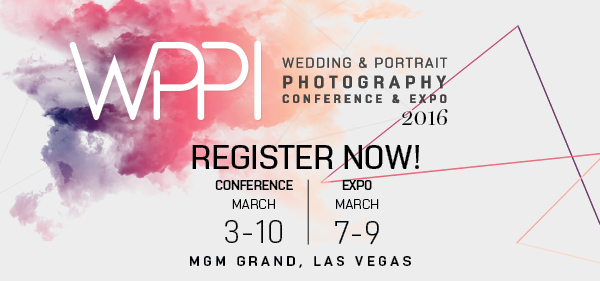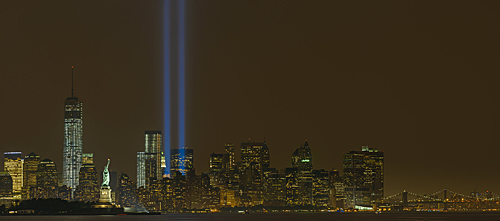Paper Curl and (those dreaded) Print Head Strikes
Written by Les Picker
Photography by Robert Boyer
Fine art printing today is far easier than even a decade ago. Still, newbies have a slew of things to think about as they climb the learning curve and gain experience. Color management, paper selection, printer dialogues, you name it and it's another item on the way to fine art printing mastery.
But how many of us think about the importance of flat paper? What does one do when fine art cut-sheet paper curls? Here I'm talking about curls that happen in boxes of sheet paper, not the curling that happens at the end of a roll of fine art roll paper (that's a separate discussion… stay tuned). This may sound like a trivial matter if you are new to printing, but when your print heads start striking those curled sheet edges, you'll be seeing dollar signs - big ones - popping up.

As a Moab Master, I thought I'd do a quick scan of some of my fellow Moab Masters to see how they handle keeping cut sheet paper flat. I also wanted to hear from the folks at Moab on how they take paper curl into consideration at the paper design and manufacturing stages.
Some Background
“What some people may not realize is that all paper is initially produced on a roll,” explains Marc Schotland, VP, Marketing for Legion Paper. “The curl is caused by the natural formation of the fibers pressed against the core of the roll.”
Once these jumbo rolls are produced, they are sent off to be coated. When the paper is coated, an anti-curl back-coat is applied to counteract the coated/printed side. These now-coated jumbo rolls are then sent off to be converted into sheets and mini-rolls (those 17”, 24” 44”, etc…).
“Obviously, the paper closest to the core will exhibit the most persistent curl memory,” Schotland continues. “But those sheets from the roll flatten over time as they are laid out on a flat surface so that the fibers will 'relax’ and modify their formation to match the flat surface”.
The problem arises when paper is kept unsealed in extreme humid conditions or fluctuating temperatures. The fibers will change formation again, sometimes even buckling if enough moisture gets into the paper.
Notes From the Real World
As a working pro myself, our studio sometimes experiences cut-sheet paper curl. We tend to go through our paper stock fairly quickly, between prints for clients and our fine art printing workshops, which minimizes the chance of curl.
Although we try to follow preventive measures to reduce curl, we're not always perfect. My assistant or I will leave a box opened overnight, or we will take out 10 sheets, only print five and then find the rest, slightly curled, two weeks later!
"In my experience, curl seems to happen with glossy and luster papers more than matte finished papers," says Jim Graham (www.jimgrahamphotography.com), a Moab Master and well-known East coast master photographer. I would agree with Jim. I have yet to have an issue with curl in matte papers even though they, too, are coated. But whatever the paper type, sheet curl can be frustrating, especially when you are under pressure to get a print done."
An Ounce of Prevention…
Based on this foray into paper curling in the box, here are some suggestions from my fellow Moab Masters, and from Moab itself, for how to keep paper flat.
“Always store paper horizontally, not vertically,” suggests Evan Parker, Moab Support Specialist.
Keep paper in the original plastic bag, in the original box. In our studio we also tape the plastic bag to seal it from the elements when not in use.
If you cannot remove the curl, use the platen gap settings on your printer to widen the gap between print heads and paper.
“Store your paper in a humidity-stable environment, out of direct sunlight, and away from heat or a/c registers,” Parker also suggests.
On some of our larger cut sheet papers, 13“x 19” and above, I also add a handy desiccator tin to the box or bag that the paper is stored in (available online). When the desiccator captures all the humidity it can, just pop it in a 300-degree oven for 3 hours (a toaster oven works great!).
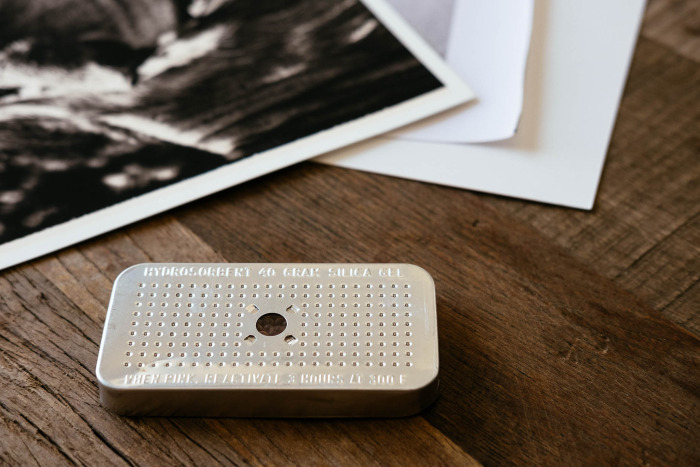
… And a Pound of Cure
Even the best preventive program sometimes fails. What do the pros do when that happens?
“If it's just minor curl, I simply will invert the paper in the box and let its own weight flatten it,” Jim Graham tells us. “If it's a major curling issue I'll sandwich the paper, wrapped in archival paper, between books. And let the pressure of the books and their weight flatten out the curl.”
Moab's Evan Parker suggests we let the sheet sit out in our printing environment for 30–60 minutes to see if an environmental adjustment resolves the curl.
In our studio we'll try gently reversing the curl with cotton-gloved hands, so as to prevent oils from our hands from contaminating the paper. On occasion I use a tissue-paper covered empty paper tube to get the job done. Gentle is the operative word here.

“I load each sheet individually into the printer with the flattest edge going down into the printer first,” explains Harold Davis (www.digitalfieldguide.com), a Moab Master from the West coast. “If the printhead seems to be striking one of the side edges of the paper, I'm not beyond opening up the printer door, which stops the printhead in its tracks, and gently smoothing the paper down. Then I'll close the print door, and printing will resume automatically.”
Still, no matter the printing challenge, we all know the value, and classic beauty, of the printed image. Moab Master Harold Davis summed it up best: “Sure, paper curl is a fact of life. But there's nothing like making hand-crafted, artisanal prints for satisfaction with one's work. Even though it is a digital world, you still make prints one-by-one, with one-off attention to sheet curl and many other issues.”
Les Picker is a Moab Master from Maryland. You can follow Les' blogs from his website: www.lesterpickerphoto.com
WPPI 2016 Highlights
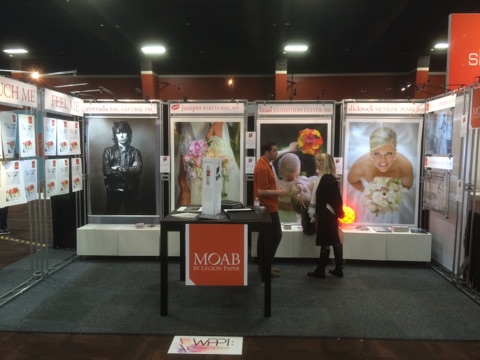
Another successful year at WPPI in Las Vegas. The new Juniper Baryta Rag is still taking a stand and drawing in the crowd with its slight glossy surface texture. Thanks to Jim Graham, we were able to show off the full capabilities of the paper with detail and bright colors. Moab also displayed Jim's images on Slickrock Metallic Pearl and Lasal Exhibition Luster. Keith Richards made an appearance at the booth as well on Entrada Rag Natural by Norman Seeff.

Looking to Mount your print?
Moab's Slickrock Metallic paper mounted to acrylic created a jaw-dropping repsonse from our audience. These 'White Dress' images by Christian Lalonde were mounted by Acrylic Press on both the Slickrock Metallic Silver and Pearl.
The metal-like mounted print could be done yourself as well with 3 components: Slickrock Metallic Paper, an adhesive film and the acrylic.
For laminating use a high grade clear adhesive film from MacTac. For the acrylic use a high grade plexi glass. Ensure that the plexi glass does not contain any gas as once the print is sealed it will look to escape and create bubbles in the print. Here are some grades we suggest from Acrylite here and here.
 Rangefinder has promoted the Power of Print program at WPPI, teaching photographers how to elevate and mantain their business through print for long-term success. Our Moab Masters weigh in on why they print their work and why it's important to them.
Rangefinder has promoted the Power of Print program at WPPI, teaching photographers how to elevate and mantain their business through print for long-term success. Our Moab Masters weigh in on why they print their work and why it's important to them.
Join us at WPPI in Las Vegas!
What will you see at booth 1507?
Moab Master Gallery
The entire Moab Paper range will be displayed including Slickrock Silver, Entrada Rag, Lasal Exhibition Luster & more with images from some of our Moab Masters inlcuding Jim Graham, Chris Lalonde and Norman Seeff.
View the entire Moab Master Gallery.
The new Juniper Baryta Rag will be front and center with samples to test the award winning paper yourself. Juniper is now available in 60" rolls. Check out our re-sellers by location.
Moab introduces Juniper Baryta Rag 305 at Photokina

Moab Paper is excited to announce the old-style darkroom paper has come a long way to develop into the Juniper Baryta Rag 305 which has just been launched at the Photokina Show in Germany this week. With the tremendous feedback from our Moab Masters and the outstanding interest from the attendees at Photokina, Moab is eager to launch the Juniper Baryta Rag in the states at PhotoPlus on October 30th. The image above was taken by Moab Master, Jim Graham and printed by Andy Biggs.
The new Moab Juniper Baryta Rag 305 is a 100% cotton fiber paper that offers the density of a traditional darkroom FB-type paper to hold detail in the deep blacks of the shadow regions, while producing natural white highlights that’s enhanced with a slight fiber glossy surface texture.
This double weight, true baryta (barium sulfate) coated inkjet fine art paper embraces the unique charm of silver halide by using state-of-the-art coating technology to bring a new method to an old tradition.
Follow Moab Paper on twitter for new updates at Photokina!
PhotoPlus Day 1 Highlights
What a whirlwind of a day! The show was packed. Slickrock Metallic Silver almost stole the show, but it had some stiff competition with the Moab Master presentations at the far end of the booth. Large 40x60 prints on the Silver from Harold Davis and Jim LaSala truly showed the impressive caliber of this amazing paper.
And those who were able to see the five Moab Master presentations got a real treat with insights into NASA, Haiti, Cuba, African wildlife and fashion. Live Slickrock printing demos on the new Canon Pixma PRO-1 rounded out the day.

The line-up tomorrow is equally impressive:
11:00am Michael Zide Through A Photographer’s Eyes
12:00pm Jody Dole Renowned image maker and digital photographer pioneer
3:00pm Ryszard Horowitz Capturing nonexistent world
Star-studded speaker line-up at PhotoPlusExpo
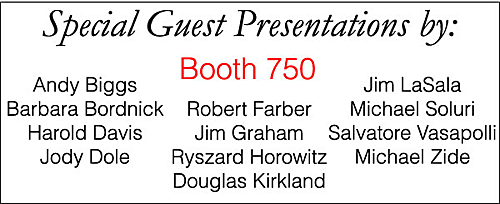
Get ready to be dazzled (and informed) by some of the biggest names in photography. We're pretty stoked to announce the photographers who will be giving short presentations in the Moab booth (#750) during the upcoming PhotoPlusExpo show in NYC.
Like all things Moab, we are taking a slightly different approach to these presentation: We've simply asked the speakers to talk about themselves and their work - no sales pitch. Some will be conducting hands-on printing workshops while others will be providing an intimate discussion on their work. Harold Davis will even be giving away copies of his new book!
We're still hammering out the exact times, but the confirmed line up will include Andy Biggs, Barbara Bordnick, Harold Davis, Jody Dole, Robert Farber, Jim Graham, Ryszard Horowitz, Douglas Kirkland, Jim LaSala, Michael Soluri, Salvatore Vasapolli and Michael Zide.
As you can see, all the photographers are at the peak of their game, each having made a huge impact on the photo industry. Expect every presentation to be a keynote event.
September 11, 2013
Photo © Jim Graham, 2013
Always something to learn
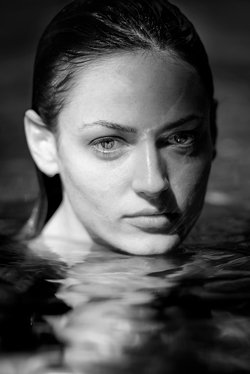 We love seeing the latest work from our Moab Masters because we are always blown away.
We love seeing the latest work from our Moab Masters because we are always blown away.
A recent example is Jim Graham. Every time we open an email from Jim we know that our eyes will feast on images that are truly beautiful.
This photo was taken in New Mexico at the Santa Fe Photo Workshops. But what's interesting is that Jim was not teaching. Rather, he signed up as a student. Yes, a student!
"I've been asked so many times, 'Why are you taking a class when you could be teaching it?' Well it's simple, I still believe that I can always learn. And you'll never know what you might take away from a class, even if it's something you needed to be reminded that you knew but had let slip away in the craziness of life."
Thanks, Jim. And continue dazzling us.
WPPI 2011
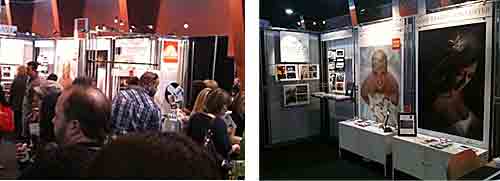
We just completed another WPPI (Wedding & Portrait Photographer's Association) show and we're exhausted. The convention center at the MGM Grand in Las Vegas was packed all three days with many photographers making a point to visit our booth to see the new Lasal Exhibition Luster 300 paper. We think it's safe to say they were not disappointed.
We had a gorgeous 44" print using an image courtesy of Moab Master, Chris Lalonde (see above). Everyone was blown away by all the detail in the deep, dark blacks. If you want to give it a test drive, get your free sample to experience this extraordinary new paper.
We also showcased Somerset Museum Rag 300 using a stunning wedding from Moab Master, Jim Graham. The paper continues to receive awards for best new fine art paper (the latest from the Professional Photographer's Association). If you've tried it, you'll know why everyone's talking about Somerset. If you haven't tried it, click here to request a sample.
We also exhibited with our Museo buddies who presented their popular 100% cotton artist cards and the awesome Silver Rag.
Thanks to all the Moab fans who visited our booth.
Moab Master Return from Iceland
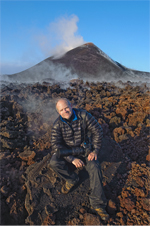 We're always excited when some of our "Moab Masters" check in from around the globe so when we saw "Iceland" in the subject line from photographer Jim Graham we got a little excited.
We're always excited when some of our "Moab Masters" check in from around the globe so when we saw "Iceland" in the subject line from photographer Jim Graham we got a little excited.
Jim has been to Iceland numerous times to capture the beauty of this volcanic island, but we haven't seen anything as explosive as these images he brought back. His story is as exciting as his photos. Click here to read about his trip.
Laying Out Your Images
If you're a portrait or wedding photographer and have ever wondered how people easily layout their images when printing on Moab's two sided papers, including our new 5x7 Entradalope cards, then I have a tip for you.
At the Photo Plus show Jim Graham, a Moab Master, produced a Wedding Album with our new Chinle Ice Nine Portfolio, using a product called Photo Junction. He spent about 10 minutes introducing me to the product and within that time I felt like I could easily layout a entire wedding album on my own. The cool thing is the program is free, easy to use and will help you with digital workflow and image layout.


